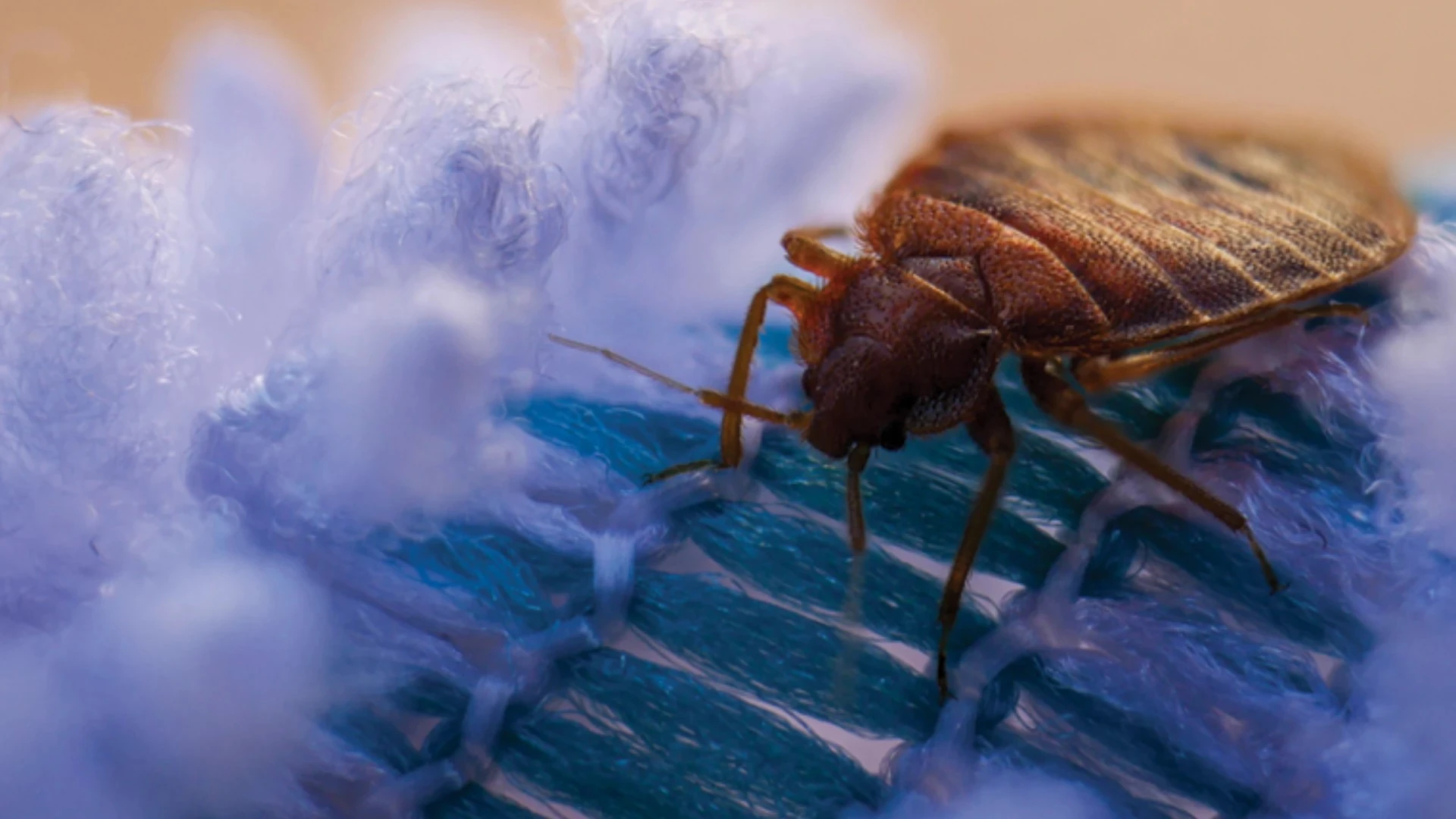La Niña, the wet winter weather pattern that dumped record rain, sleet and snow across the country in late 2010 and early 2011, has not gone away quietly. Instead, it’s being blamed for creating the perfect storm of unwelcomed insects. La Niña is typically characterized by unusually cold ocean temperatures in the Equatorial Pacific, compared to El Niño, which is characterized by unusually warm ocean temperatures in the Equatorial Pacific.
Since termites, ants and other pests thrive in moist conditions, they’re expected to be especially prevalent across America this spring, as record snow packs melt from the Sierra Nevada to Capitol Hill.
"When conditions are warm and wet, pests begin to swarm in search of food, shelter and mates," said Dr. Bob Davis, entomologist, BASF Pest Control Solutions. "Unfortunately, this search brings many of these insects inside, where they can create a nuisance and destroy property."
Just how bad your area’s pest problem will be this summer depends on several factors, including your firm’s region and your area’s most recent weather.
Based on known climate conditions and predictable pest behavior, Davis offers the following pest problem outlook for specific U.S. regions:
The South. With its hot, humid summers and temperate winters, the South offers ideal conditions for a wide range of pests, including many species of ants.
"Ants live in nests just below the soil surface, so once the ground gets soaked, they quickly begin moving their nests to higher locations," Davis said. "Once they get flooded, it doesn’t matter how clean your (customer’s) home is — no one is immune from an invasion."
Ant populations are expected to grow across the South this summer, bolstered by an influx of feisty foreign invaders. For example, the Caribbean crazy ant had only recently been seen in Texas, but has already begun to spread to multiple counties in Southeast Texas and may now be in the neighboring state of Louisiana. These ants are aggressive enough to drive out the native ants.
"There are whole neighborhoods in Southeast Texas that are being overrun with millions of these invasive ants," Davis said.
In most regions, crazy ant colonies are relatively small, with multiple queens and a few thousand workers. However, in favorable environments (e.g., Florida), larger colonies containing tens of thousands of ants may be linked by foraging trails.
The threat of termite infestations also could intensify this summer with some forecasts predicting average-to-higher temperatures and average precipitation in Florida, Georgia and surrounding states.
A season of intermittent rains with warming temperatures is conducive to termite swarming. Swarms occur when winged termites leave the nest to form new colonies — often right after a rainfall. But termites also can expand their colonies’ ranges without swarming. In fact, during years of reduced swarms, a single subterranean termite colony may split into multiple smaller ones underground.
Southeastern drywood termites, often found in the extreme Southeast, swarm from late May to mid-June. They can infest buildings, eating structural timbers, pieces of furniture, flooring, doors, window trim, even wooden picture frames. Many times interior swarms will be found near windows and doors because the swarming termites are attracted to lighted areas.
*****
Answers to FAQS About La Niña
What is La Niña?
La Niña is defined as cooler than normal sea-surface temperatures in the central and eastern tropical Pacific ocean that impact global weather patterns. La Niña conditions recur every few years and can persist for as long as two years.
What is the difference between La Niña and El Niño?
El Niño and La Niña are extreme phases of a naturally occurring climate cycle referred to as El Niño/Southern Oscillation. Both terms refer to large-scale changes in sea-surface temperature across the eastern tropical Pacific. Usually, sea-surface readings off South America’s west coast range from 60s°F to 70s°F, while they exceed 80°F in the "warm pool" located in the central and western Pacific. This warm pool expands to cover the tropics during El Niño, but during La Niña, the easterly trade winds strengthen and cold upwelling along the equator and the West coast of South America intensifies. Sea-surface temperatures along the equator can fall as much as 7°F below normal.
Why do El Niño and La Niña occur?
El Niño and La Niña result from interaction between the ocean’s surface and the tropical Pacific atmosphere. Changes in the ocean impact the atmosphere and climate patterns around the globe. In turn, changes in the atmosphere impact ocean temperatures and currents. The system oscillates between warm (El Niño) to neutral (or cold La Niña) conditions an average of every 3 to 4 years.
What causes La Niña?
Typically, a La Niña is preceded by a buildup of cooler-than-normal subsurface waters in the tropical Pacific. Eastward-moving atmospheric and oceanic waves help bring cold water to the surface through a complex series of events still being studied. In time, the easterly trade winds strengthen, cold upwelling off Peru and Ecuador intensifies, and sea-surface temperatures (SSTs) drop below normal.
What are the U.S. impacts of La Niña?
La Niña often features drier than normal conditions in the Southwest in late summer through the subsequent winter. Drier than normal conditions also typically occur in the Central Plains in the fall and in the Southeast in the winter. In contrast, the Pacific Northwest is more likely to be wetter than normal in the late fall and early winter with the presence of a well-established La Niña. Additionally, on average La Niña winters are warmer than normal in the Southeast and colder than normal in the Northwest.
Is there such a thing as "normal," aside from El Niño and La Niña?
Over the long-term record, sea-surface temperatures in the central and eastern tropical Pacific diverge from normal in a roughly bell-curve fashion, with El Niño and La Niña at the tails of the curve. Some researchers argue there are only two states, El Niño and non-El Niño, while others believe either El Niño or La Niña is always present to a greater or lesser degree.
Source: National Oceanic and Atmospheric Administration
*****
The West. This past winter was severe in the West. Colder-than-normal temperatures and heavy precipitation hit many areas hard. Officials from the Department of Water Resources in California say the snowpack in the Sierra Mountains was 165 percent of normal levels.
While the snow is a blessing to previously drought-stricken California, it also sets the stage for heavier-than-normal bug infestations. Spiders, scorpions, beetles and termites can flourish when normally dry ground is flush with water.
One frequent menace is the Western subterranean termite. Swarming can occur in the spring, but smaller swarms can occur throughout the summer and fall.
The wet conditions will also create a field day for ants, including the Argentine ant, whose massive colonies can be found along the West Coast as well as parts of the Eastern and Gulf Coast states.
"The Argentine ant has few natural enemies here, so they can quickly knock out native ants," Davis said. "When Argentine ants get inside a house, they’re a force to be reckoned with. I’ve seen these ants travel in columns as wide as my wrist."
Red imported fire ants have invaded parts of the West, expanding their range every year. They’re extremely resilient and have adapted so well that they can survive floods and droughts. Fire ants characteristically become ferocious if their nests are disturbed, and their painful stings carry venom that can be highly unpleasant or even lethal if an individual is sensitive to the venom or is stung excessively.
The Midwest. States from Missouri to Iowa to Wisconsin saw more flooding last year, with thousands of homes damaged by water. In fact, soil moisture conditions over many of these states are categorized as "extremely or very moist." The residual effect this year could be a proliferation of household pests that thrive in damp conditions, such as silverfish and spiders. Moisture also increases the odds of termites, especially in states such as Missouri, Iowa, Ohio, Indiana and Illinois. The southern parts of states such as Wisconsin and Minnesota also may see increased termite threats, particularly from the Eastern subterranean termite — the most common and widely distributed North America termite. This pest feeds on cellulose materials, including structural wood, wood fixtures, paper, books and cotton, and will even attack the roots of shrubs and trees. In the colder northern states, carpenter ants are a greater threat to homeowners. Carpenter ants prefer to nest in trees next to homes, but they’ll come inside to nest if they can’t find enough wood outside.
"Ants are omnivores, which mean they’ll eat plants or meat. When they invade our homes, they eat mostly whatever they can find," Davis said.
The Northeast. With record snowfall and rain in the Northeast, wet conditions will likely persist. Combined with the warming temperatures, this will create attractive conditions for a variety of invaders. Common culprits include the Eastern subterranean termite and the black carpenter ant. Mature carpenter ants produce swarmers that spend their winters in nests and take flight in the spring. Indoor carpenter ants may be seen trailing along edges of cabinets, floors and furniture.
The Brown marmorated stink bug is an invasive species introduced into Pennsylvania in the 1990s. It has spread to 33 states and can cause agricultural damage and become a problematic overwintering pest. Large numbers of these bugs can enter homes and businesses in the fall looking for sites to overwinter.
Source: BASF Pest Control Solutions. For information about termites, bed bugs and ants visit www.termiteinstitute.com, www.bedbuginstitute.com and www.antinstitute.com.

Explore the June 2011 Issue
Check out more from this issue and find your next story to read.
Latest from Pest Control Technology
- Rentokil Terminix Expanded in Key Markets with 2024 Acquisitions
- In Memoriam: Joe Cavender
- Certus Acquires Green Wave Pest Solutions
- Liphatech Adds Alex Blahnik to Technical Team
- Do the Right Sting: Stinging Insect Identification, Management, and Safety
- VAGA's 8th Annual Veterans Thanksgiving Appreciation Dinner
- Clark's Blair Smith on the Response to Increased Dengue Fever Cases in Southern California
- WSDA, USDA Announce Eradication of Northern Giant Hornet from U.S.





